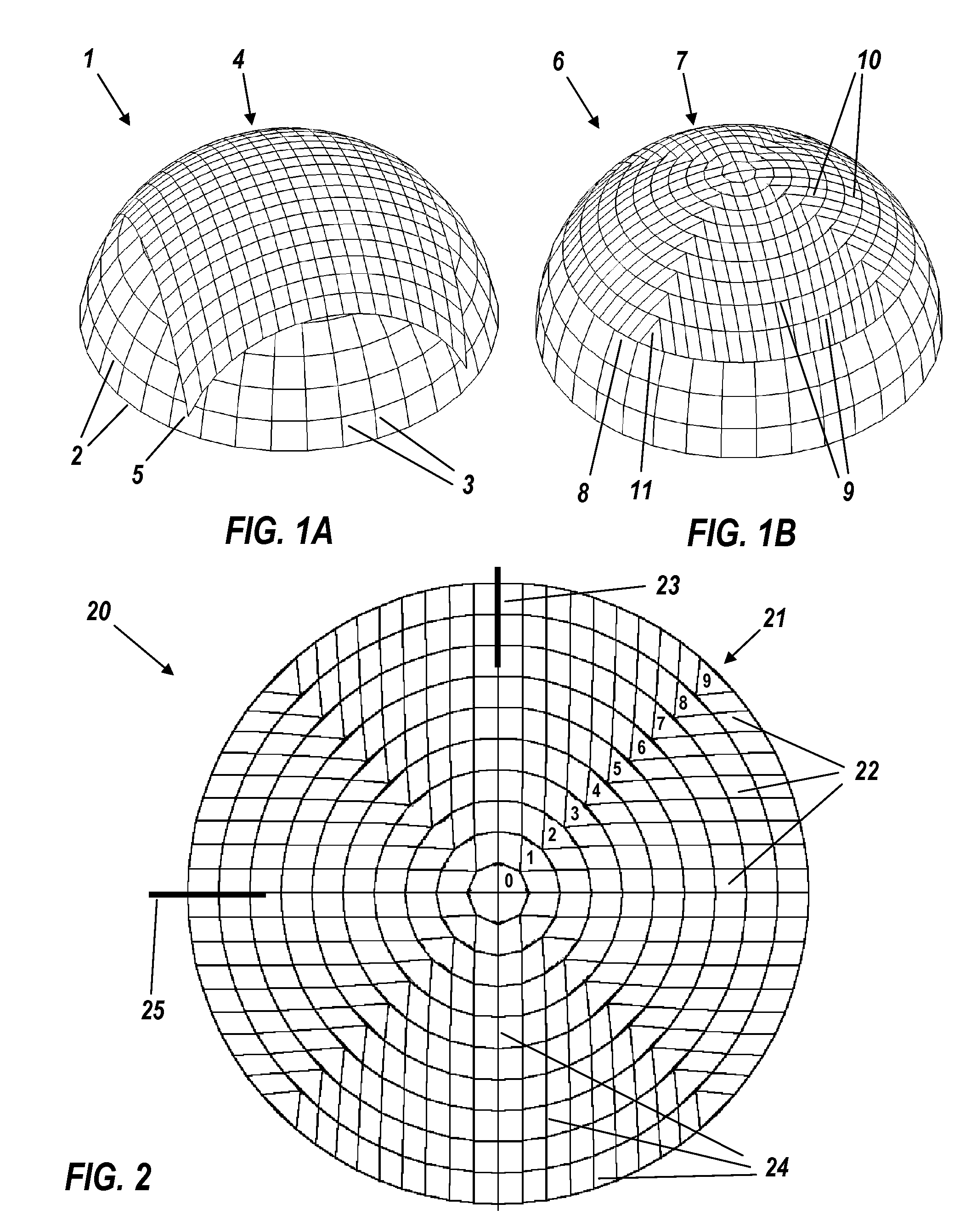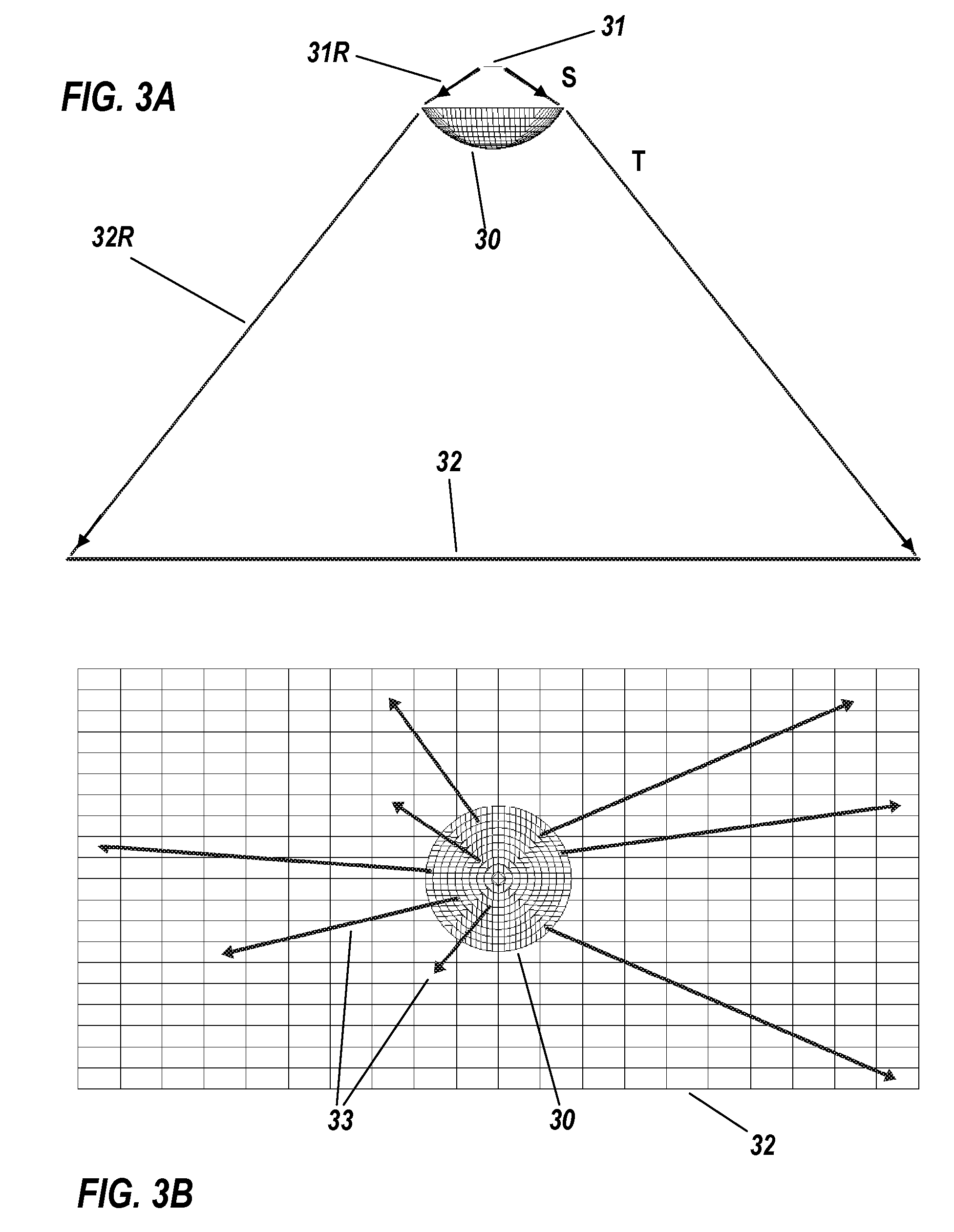Free-form lenses for rectangular illumination zones
a free-form, rectangular technology, applied in the field of illumination, can solve the problems of incompatibility with the rectangular geometry, global discontinuities, segmented lenses with radial cliffs, etc., and achieve the effect of high efficiency
- Summary
- Abstract
- Description
- Claims
- Application Information
AI Technical Summary
Benefits of technology
Problems solved by technology
Method used
Image
Examples
Embodiment Construction
[0043]A better understanding of the features and advantages of the preferred methods and embodiments disclosed herein will be obtained by reference to the following detailed description of the preferred embodiments and accompanying drawings, which set forth illustrative embodiments in which the principles of the invention are utilized.
[0044]The design of refractive free-form illumination optics will encounter a fundamental difficulty when large solid angles are involved, particularly in the case of light-emitting diodes (LEDs), which emit into a hemisphere. There is a topological mismatch between a rectangular target and the hemispheric or quasi-hemispheric (60° or more off-axis) emission of most LEDs.
[0045]FIG. 1A illustrates a unit-radius spherical cap 1 that represents the angular coverage of an LED emitting out to 60° off-axis. The cap 1 has a polar grid comprising co-latitude circles 2 extending to 60° off-axis and meridians 3. A rectangular grid 4 is overlaid upon the cap 1 wi...
PUM
 Login to View More
Login to View More Abstract
Description
Claims
Application Information
 Login to View More
Login to View More - R&D
- Intellectual Property
- Life Sciences
- Materials
- Tech Scout
- Unparalleled Data Quality
- Higher Quality Content
- 60% Fewer Hallucinations
Browse by: Latest US Patents, China's latest patents, Technical Efficacy Thesaurus, Application Domain, Technology Topic, Popular Technical Reports.
© 2025 PatSnap. All rights reserved.Legal|Privacy policy|Modern Slavery Act Transparency Statement|Sitemap|About US| Contact US: help@patsnap.com



